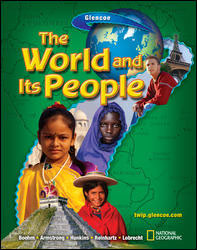
The World and Its PeopleChapter 18: Southwest AsiaChapter OverviewsThe country of Turkey bridges the continents of Asia and Europe. Istanbul, its largest city, is the only city in the world located on two continents. Almost 100 percent of Turkey's people are Muslims, and nearly 70 percent live in cities or towns. Syria's land includes fertile coastal plains and valleys along the Mediterranean Sea. Agriculture is its main economic activity. Nearly half of Syria's people live in rural areas, and a few are Bedouins. The capital city, Damascus, is one of the oldest continuously inhabited cities in the world. Lebanon is the most densely wooded of all the Southeast Asian countries. More than 88 percent of its people live in coastal urban areas. Today the country is rebuilding after a civil war that lasted from 1975 to 1991. The country of Jordan lacks water and energy resources. The majority of its people work in service and manufacturing industries, and most are Arab Muslims. Israel is the most industrialized country in Southwest Asia, producing electronic products, clothing, food products, and machinery. Israel has been home to different groups of people over the centuries, and the ancient traditions of these groups have led to conflict among their descendants today. Saudi Arabia is the largest country in Southwest Asia. It holds a major share of the world's oil, the sale of which has helped boost its economy. Several million Muslims travel to the city of Makkah every year as part of a religious pilgrimage. Several other smaller countries on the Arabian Peninsula also have strong economies based on oil. Iraq, Iran, and Afghanistan are located in a region where some of the world's oldest civilizations developed. Each of these countries has recently been involved in a war and undergone sweeping political changes. |  |















